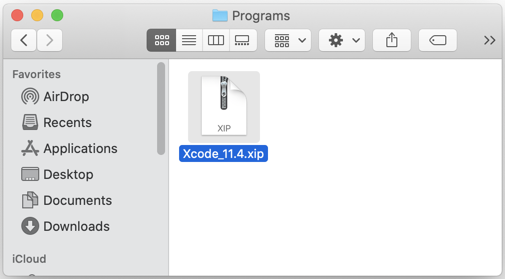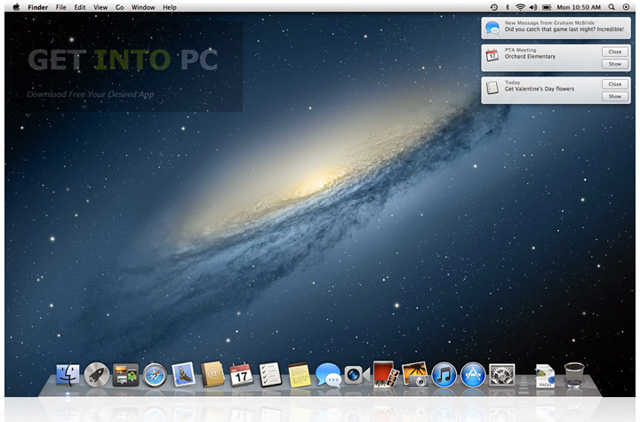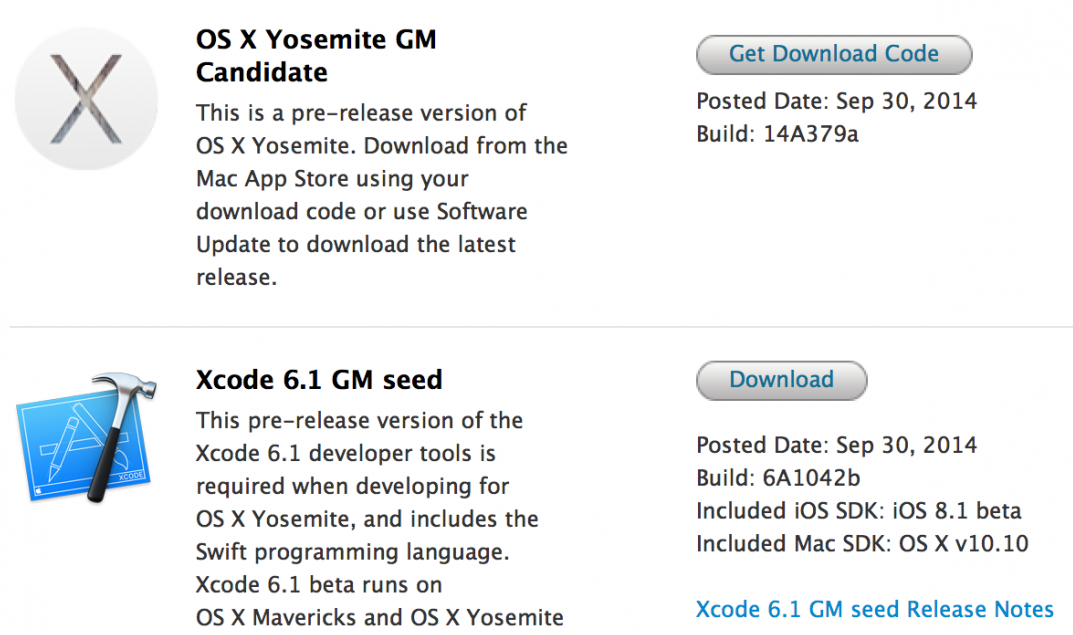There's hardly enough info here. Have you done any research of your own, have you tried the documentation from developer of the product etc. Show that you've done some research, link to sites, show your errors if any in the current process you were using. – Sizons Mar 8 at 9:16. If you have an earlier release of Mac OS X, you may download the latest version of Xcode for Mac OS X 10.5 (Xcode 3.0 and Xcode 3.1 Developer Tools) or 10.4 (Xcode 2.4.1 and Xcode 2.5 Developer Tools) from the Apple developer website. Follow the below steps so as to install Xcode on Windows 10, 8, or 8.1 and Windows 7 desktop or laptop for iOS SDK. Step 1: Initially, download and install VMware or VirtualBox on your Windows computer from the above link. Step 2: Now, you need to download and install OSX Mavericks ISO as a virtual machine. To update the CLT, go to app developer website and download the command line tool.dmg. If you have never installed Xcode before, you may be able to update with your Terminal by typing in xcode-select -install instead of visiting the developer website.
Download macOS Mojave dmg file, therefore, macOS Mojave is one in all the most recent versions of the macOS package, once macOS chain. that freshly supported new options of this outstanding like macOS Mojave Black screen mode, and plenty of completely different interfaces. macOS Mojave black screen mode is one in all the nice options among the freshly free features of macOS Mojave. Apple company’s previous time the thought to feature this feature to the sooner Macintosh package. Fortuitously this point they tried there utmost to own excellent results of developing a new package of Macintosh users. Macintosh OS Mojave is integrated for desktop laptops and Mac computer package. However, one in all the foremost contestable news is, here that macOS Mojave has the best performance, security, stability, and nice graphics over an older version of the macOS package.
macOS Mojave
macOS Mojave is that the fifteenth major unleashes of macOS, that we can use this software for desktop and Macintosh computers. Once the macOS chain this software was proclaimed to on worldwide conference of (WWDC) in 2018. Thereon time the most recent version of macOS Mojave was ten.14. Besides that they proclaimed iOS twelve to the general public. However, macOS Mojave has one in all the best tools to create your work straightforward and easy.
Finally, after a long time, Mac company decided and developed the macOS Mojave dark mode inside the other features. The dark mode is the new feature inside the macOS Mojave operating system. Certainly, the dark mode includes the taskbar and scheme. While you are going to install it on your computer. So, there is no need to change the performance of the computer. It only changes the environment of the Mac computer more beautiful and great.
Download macOS Mojave DMG File
macOS Mojave
- The Mac has finally released dark mode thanks to macOS Mojave. Just brought toggle to preferences, The dark mode entire macOS operating system. From it is own Apps like and Photos, iTunes, and complete window filters. And you are allowed to install and use Xcode easily on it.
- In macOS Mojave, the new feature is called Stack. Which added on the right-handed of macOS Mojave, which can be documented arrange by file and date. If you click on Stack directly the file will see from Stack folders, just double-clicking on the document it will appear all the file type.
- Apple in 2018 while the published macOS Mojave, to the public and presented the App Store also. The App store redesigned from the ground of macOS Mojave. One of the biggest changes in macOS Mojave is that now you can play the Audio autoplay, then even articles, and more about the popular Apps in the App Store. The new Mac App store allows you to download the Apps from the App store easily.
Read More about macOS Mojave new Features
- macOS Mojave better Screenshot Tools, there are tools to give permission you to record quickly from the screen of macOS Mojave. While it is like this to take a single screenshot from the macOS Mojave display screen. And macOS Mojave introducing new screen grabbing tools to the list of software in macOS Mojave.
- Apple has made a new feature which is Camera Continuity. For example, if you want to work on a document, therefore, you want to add a photo the camera will automatically activate on your phone. While you are taking a photo it will appear automatically on the document you are working.
- Quick Look, allows you to perform a quick action without needing to open the exact App or file. Therefore, in macOS Mojave quick look it will invoke markup tools. Like adding your signature, rotating, cropping the images.
- If we should think deeply and focus on the Mac operating system, or iPhone they have a great security system. But macOS Mojave has the new greatest control over its data and security. And in macOS Mojave, while you are installing a single App. So, you need to access your username and password. Also, Apple is not protecting more aspects of your data.
Download macOS Mojave VMDK & DMG File – Download links
Download macOS Mojave dmg file
If you are in trouble with downloading macOS Mojave. So, you can download easily macOS Mojave VMDK file from here with a single click. After that, you clicked on that wait from some second the download link will appear on the screen. Or you can download macOS Mojave latest version from Techsprobe.
And you can get the latest version of macOS Catalina 10.15 VMDK and dmg file from below given link.
macOS Mojave 10.15 DMG File Details
- Product: macOS Mojave V10.14.18A391 dmg for Mac
- Size of macOS Mojave dmg file: 5.629 GB
- dmg Version: 10.14
- Setup Extension: dmg
- Tools for DMG required: None
- Also if you want to visit Apple (Official) page click on the Link.
System Requirements for macOS Mojave 10.14 installation:
- Operating system: OS 10.11 or later or newer
- RAM (Memory): 4 GB of RAM is required for this dmg installation
- Storage space: 16 GB of storage is required for this dmg installation of PC.
- System Processor Required: Intel Core 2 Duo or later (Core i3, Core i5, Core i7), or Macintosh PC “Workstation”.
Download “macOS Mojave” dmg file, and “macOS Catalina” 10.15
- macOS Mojave.V10.14.18A391.dmg (3.1 GB)Download
Download macOS Mojave DMG file last update:
- Download DMG 10.14.6
- Download Security Update
- Download macOS Mojave 10.14 – Direct Link
Xcode Dmg Download Link Vpn
macOS Catalina’s new Mac’s operating system is newly developed and released by Apple and ready to Download.
Install macOS Mojave on PC & VMware & VirtualBox.
To install macOS Mojave on PC, VMware & VirtualBox. Firstly, you need to download the dmg file of macOS Mojave 10.14 or new updates. Then you have to create a Bootable USB for it. There are different kinds of creating Bootable USB for macOS Mojave. But here you can find the article belong to it which I have tried and worked for me. So, below I will give you the link of installing macOS Mojave on VMware & VirtualBox, or methods of creating macOS Mojave Bootable USB.
However, if you want to install macOS Mojave on VMware Workstation as a guest machine, So, follow this article.
And if you want to install macOS Mojave on VirtualBox on Windows, So, follow as well the bellow article also.
Once you have successfully downloaded the DMG file of macOS Mojave. Next, you need to create a Bootable USB for macOS Mojave, After that, it is done then install it on PC-Hackintosh. Read More
Related:
Conclusion
That’s all about the Downloading dmg file of macOS Mojave. And about the latest Features of macOS Mojave, then creating macOS Mojave Bootable USB. So, If you are really like this article so give your feedback, and subscribe to our website for your more support.
Xcode is the tool developers use to build apps for the Apple ecosystem – MacOS, iOS, and all things Apple.
Xcode Dmg Download Link Windows 10
This guide will walk you through how to successfully install Xcode onto your Mac, from start to finish.
Here are some handy tips to know before you get started:

- Xcode only runs on a mac. If you are on a PC, sadly you won't be able to use Xcode.
- You'll need a good, stable internet connection. The latest version is around 8 gigabytes in size.
- Be sure to have at least 30 gigabytes of free space on your computer. The latest
.xipfile (v11.4.1 at the time of writing) is ~8 gigabytes zipped. When you unzip it, that's another 17 gigabytes. Then you'll need the command line tool, which is yet another 1.5 gigabytes.

Here's an overview of the steps to install Xcode
- Download Xcode
- Install the command line tool
- Open the new version
- Delete files
Note that I have listed some Terminal commands in the steps below. These commands can be typed into your present working directory. This means that you don't need to navigate to any particular folder.

If you really want to, you can first type cd before typing the commands in the below steps. This will return you back to the home folder.
Step #1: Download Xcode
There are two ways to do this. For the latest version and a theoretically 'easy' installation, you can use the App Store. I don't recommend this option.
I prefer to use the developer site. This comes with the bonus option of being able to download any version you'd like.
Option #1: Download via the App Store for the latest version (not my preferred option)
In theory, this should be a seamless and pain-free process. But if the installation fails for any reason on the last step, it is very hard to troubleshoot.
There are a few reasons for failure, and no easy way to know which is the underlying cause. If you do encounter a failure, you will need to re-download the entire file again each time you try to fix the failure. As the latest version is 8 gigabytes, I didn't much enjoy this approach.
But if you're feeling brave, here are the steps:
- Open the App Store on your mac
- Sign in
- Search for Xcode
- Click install or update
Option 2: Download via the Developer site for a specific version (my preferred option)
- Head to the 'more' section of the Apple developer website
- Sign in with your iTunes account id
- Type in the version that you'd like, and download the
Xcode_x_x_x.xipfile. Keep in mind that Xcode 11.4.1 is 8 gigabytes, so this will take awhile depending on your internet connection. - Once the file is downloaded, click on
.xipto extract it. Your laptop will extract it to the same folder you downloaded it to. This extraction process is automatic. You don't need to do anything more after you click on the.xipfile. This step will take a few minutes. - [Optional] Once extracted, rename the application to “Xcode11.x.x” if you are using multiple versions.
- Drag application to the Applications folder
- [Optional] Set the new Xcode version as the default. Open Terminal and type
sudo xcode-select -switch /Applications/Xcodex.x.x.app. Replacex.x.xwith the version number. For example:Xcode11.4.1.app. You will need to enter in your computer admin password. I'm pretty sure this will update the default Xcode version for all users on your computer, so best to check with other users first
Step #2: Install the command line tool (CLT)
If you have multiple users on your computer, you will need to update the CLT for each user.
Download .dmg
To update the CLT, go to app developer website and download the command line tool .dmg.
If you have never installed Xcode before, you may be able to update with your Terminal by typing in xcode-select --install instead of visiting the developer website.
Xcode Dmg Download Link Creator
But if you have an existing version of Xcode installed on your machine, you'll probably see this error:
This means you'll need to go to the developer website instead.
Installing the CLT
When the .dmg has finished downloaded, double click the file to open it. This will open a little window that looks like this:
Double click the box and follow the prompts to install the CLT. It will take a few minutes to complete.
It may ask you at the end of the installation whether you want to move this to the trash bin. When it does this, it's talking about moving the .dmg file to the trash bin. Since you should no longer need this file. I always say yes to this.
Step #3: Open Xcode
Open the Applications folder and open the new version of Xcode. If you renamed Xcode, make sure you open the correct application
Xcode may prompt you to install additional components. Click install. This will take a few minutes.
While it's installing, check that your default Xcode version is the one you just downloaded:
- Open Terminal
- Type
brew config - You should see “CLT” and “Xcode” versions, as well as everything else. This should reflect the version that you have just downloaded. In my case, I downloaded Xcode 11.4.1.
Once the components are installed, Xcode will launch. You should be able to pick up your old projects and continue where you left off seamlessly*.
*Note that if you use any proxy tools, such as Charles, you will need to re-install those certificates in your simulator again.

If you encounter any errors while trying to build or run a project, check which device you are trying to launch. The new version may not remember the device you were using before. If so, click on the device and choose 'Add additional simulators' from the drop down menu to add the device you want.
Step #4. Delete the files
If you don't need the older versions of Xcode on your computer, you can uninstall them and get some hard drive space back.
You can also delete the .xip file of the version you just downloaded, as well as the CLT.dmg file.
That's everything. I hope this has helped you successfully install Xcode. Have fun with it!
